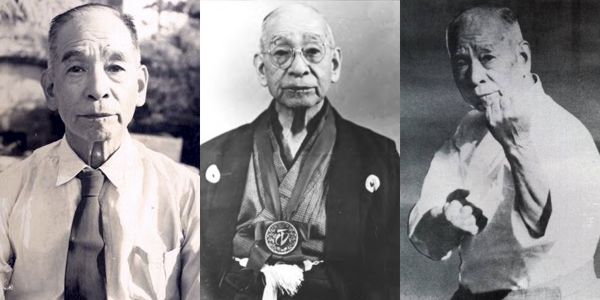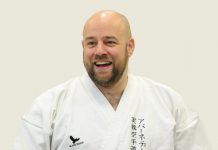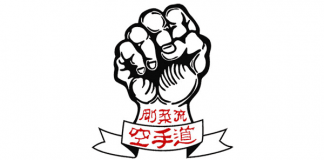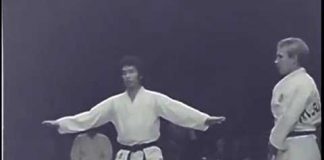Kobayashi Shorin-ryu is called kobayashi style aby the Japanese.
“… now the Japanese call it ‘kobayashi style’ but that is incorrect – but that is all right because only people who do not know Okinawan karate will call it by that name. Since they do not know you must gently remind them or the Okinawan people will laugh at their ignorance. After all, it is funny, many foreign people call it kobayashi shorin-ryu (小林小林流)- that is just like saying shorin shorin-ryu. It doesn’t make much sense …”
The kanji are never written as 小林小林流 (kobayashi shorin-ryu) but always as 小林流 (shorin-ryu). The term Kobayashi Shorin-ryu is only used in the west and only by certain branches of Shorin-ryu. The Japanese reader of the kanji 小林流 automatically knows it is not Matsubayashi-ryu 松林流 because the kanji are different.
Shorin-ryu is one of the major modern Okinawan martial arts. It was founded by Choshin Chibana in 1933. Shorin-ryu combines elements of the traditional Okinawan fighting styles of Shuri-te.
Chosin Chibana was a top student of the great master of shuri-te, Anko Itosu. Anko Itosu was the top student of Matsumura Sokon was a renowned warrior of his time; bodyguard to three kings of Okinawa, he has been called the Miyamoto Musashi of Okinawa and was dubbed bushi, or warrior, by his king. However, while he is often referred to as the “founder” of Shuri-te, he did not invent all the components of the style. He synthesized his knowledge of Okinawan arts with Chinese martial arts that he learned on his travels and taught it as a coherent system to some eager students, who subsequently refined it, and passed it on. In 1933, Chosin Chibana chose to call his style Shorin-ryu in honor of the Chinese Shaolin roots, and to differentiate it from others styles that were being modified from the original teachings of Anko Itosu. Prior to this time, there were no names for styles in Okinawa (though common in Japan for Japanese martial arts).
Shorin is the Japanese pronunciation of the Chinese Shaolin and ryu means “Association”. Therefore, Shorin-ryu reflects the Chinese influences intrinsic to the art. Though it reflects the Chinese influence, it was also meant to signify that it was a distinct and different martial art from the Shorin Chuanfa.
Shorin-ryu is generally characterized by natural breathing, natural (narrow, high) stances, and direct, rather than circular movements (with the exception of Shorin-ryu Kyudokan, which makes extensive use of circular movements). Shorin-ryu practitioners will say that correct motion matters, being able to move quickly to evade violence by having fluid movements and flexible positions is quite important, and that a solid structure is very important for powerful moves, but stances that are too deep, will most likely make body movement very difficult.







